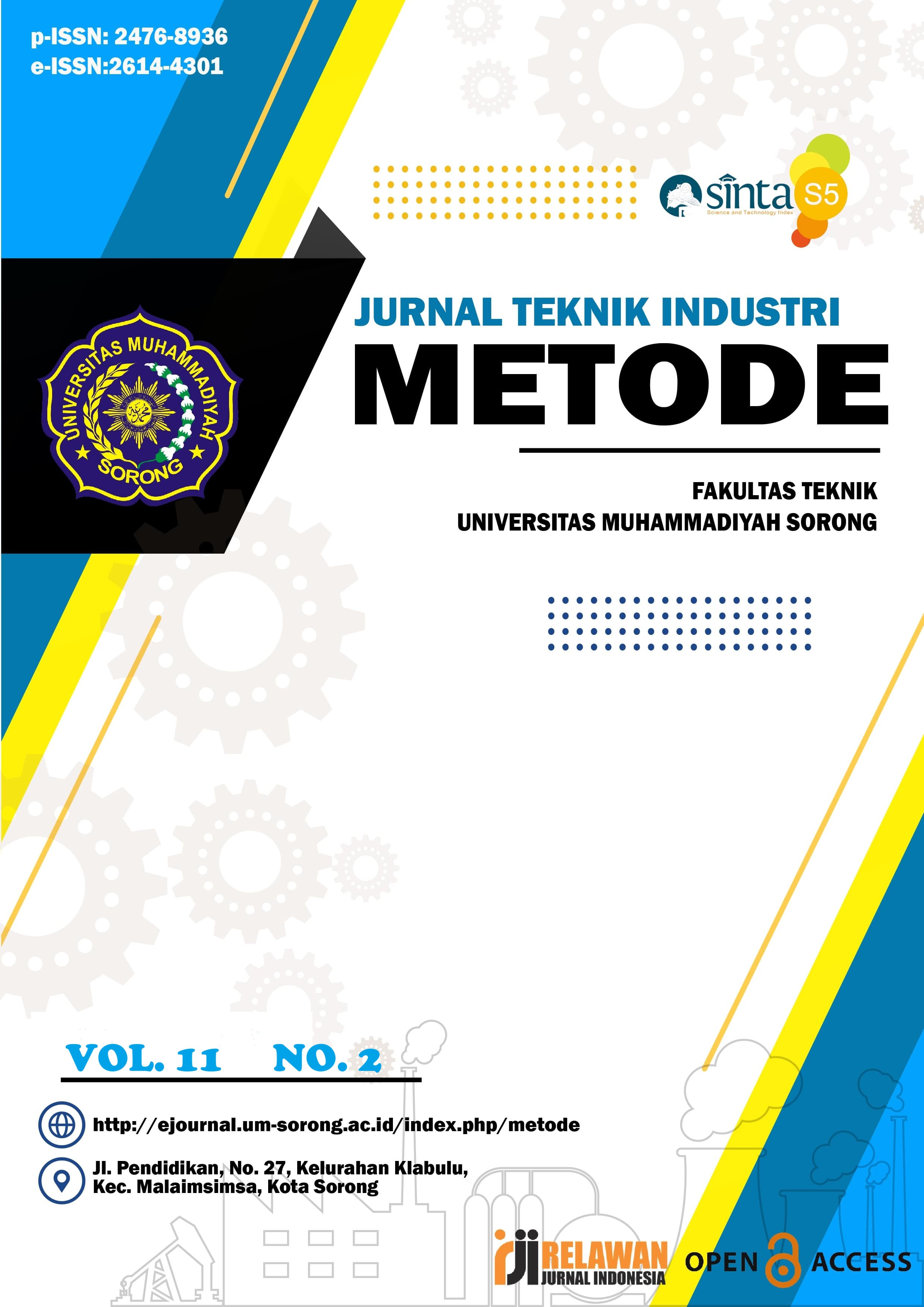Critical Control Point Analysis of Physical Environment on Work Stress in Textile Industry
DOI:
https://doi.org/10.33506/mt.v11i2.4739Keywords:
Critical Control Point, employee work stress, work physical environmentAbstract
A safe and comfortable work environment plays a crucial role in maintaining employee health and productivity, especially in the textile industry, which is characterized by repetitive and physically demanding tasks. This study aims to identify the Critical Control Points (CCPs) of physical environmental factors—namely temperature, lighting, and noise—and analyze their effects on work-related stress. The research employed direct measurements of environmental conditions and distributed questionnaires to 68 respondents selected through random sampling. Data adequacy tests confirmed that the sample size was representative. CCP analysis revealed that temperature and noise levels in several work areas, particularly in the Extruder and Dryer sections, exceeded regulatory thresholds and were thus classified as critical control points. In contrast, lighting levels remained within acceptable limits. ANOVA testing produced a significance value of 0.000 and an F-value of 13.181, indicating a significant influence of physical environmental factors on work stress. Therefore, it can be concluded that controlling temperature and noise is essential to reducing stress risks, improving workplace comfort, and supporting worker productivity in the textile industry.
References
Agusti, J. R., Harahap, U. N., & Hasibuan, Y. M. (2025). Implementasi Failure Mode and Effect Analysis Untuk Meminimalkan Produk Cacat Implementation Of Failure Mode and Effect Analysis for Minimizing Defects. Metode Jurnal Teknik Industri, 11(1), 181–182.
Al-Mustajidi, M. F., Kurniawan, A. W., & Ruma, Z. (2025). Pengaruh Lingkungan Kerja terhadap Produktivitas Kerja Karyawan PT. Biringkassi Raya. Jurnal Nuansa : Publikasi Ilmu Manajemen Dan Ekonomi Syariah, 3(1), 269–281. https://doi.org/10.61132/nuansa.v3i1.1629
Amri, I., Masniar, & Nasrun, K. A. (2019). Evaluasi Tingkat Kebisingan dan Pencahayaan Pada Ruang Perkuliahan Gedung 5 Universitas Muhammadiyah Sorong. In Metode Jurnal Teknik Industri (Vol. 5, Issue 1).
Antoro, B. (2024). Analisis Penerapan Formula Slovin dalam Penelitian Ilmiah: Kelebihan, Kelemahan, dan Kesalahan dalam Perspektif Statistik. https://jurnal.ananpublisher.com/index.php/jmsh
Devi, P. R., Mursito, B., & Mariyam, S. (2024). Kinerja Karyawan Ditinjau dari Motivasi, Lingkungan dan Disiplin Kerja Karyawan Studi Kasus PT Delta Merlin Sandang Tektile IV Sukoharjo. Jurnal ARASTIRMA Universitas Pamulang, 4(Agustus), 399–409.
Dewi, A. P., Rachmadewi, I. P., & Iryani, D. I. (2021). Penerapan Metode 5S+Safety di Bagian Produksi Pabrik Gula Application of 5S+Safety Method in Production Department of Sugar Factory. Metode Jurnal Teknik Industri, 10(2), 170–179.
Fitrayuda, A., Fajrin, J., & Anshari, B. (2020). Analisis sifat meknais komposit polyester sisal menggunakan metode ANOVA. https://doi.org/10.33758/mbi.v14i7.489
Ni’am, M., Dewi, S., & Kurniawan, W. (2025). Pengendalian Kualitas Serbuk Kayu Menggunakan Metode Seven Tools dan FMEA Quality Control of Wood Powder Using Seven Tools and FMEA. Metode Jurnal Teknik Industri, 11(1), 13–24.
Nurdin, N., Hamdhana, D., & Iqbal, M. (2018). Aplikasi Quick Count PILKADA dengan Menggunakan Metode Sample Random Sampling Berbasis Android. TECHSI - Jurnal Teknik Informatika, 10(1), 141–156. https://doi.org/10.29103/techsi.v10i1.622
Putri, A. R., Razaq, S., & Fijra, R. (2023). Analisis Pengendalian Kualitas Produk X Pada PT XYZ Menggunakan Metode DMAIC Quality Control on Product X at XYZ Company Using The DMAIC Method. In Integrasi Jurnal Ilmiah Teknik Industri (Vol. 08, Issue 02).
Saefulhadi, A., Hakim, C. B., Ridwan, A., Firmansyah, N. A., & Hana, F. M. (2025). Analisa Pengendalian Kualitas Produk Dengan Metode Six Sigma PT. XYZ Product Quality Control Analysis Using the Six Sigma Method PT. XYZ. Metode Jurnal Teknik Industri, 11(1), 36–50.
Santoso, B., & Hastarina, M. (2018). Pendistribusian Minyak Avtur dengan Metode One Way ANNOVA di DPPU SMB II Palembang.
Siswanto, Suling, M. R., & Kayatun, S. N. (2025). ) Diterima 18 Desember. Metode Jurnal Teknik Industri, 11(1), 77–87.
Trijayanto, M. A., & Abdulrahim, M. (2023). Analisis Penerapan HACCP (Hazard Analysis Critical Control Point) Pada Proses Produksi Fillet Ikan Kakap di PT. Alam Jaya untuk Menjaga Kualitas Produk. Jurnal Ilmiah Teknik Dan Manajemen Industri, 3(1), 839–852. https://doi.org/10.46306/tgc.v3i1
Yaqin, M. A. (2018). Populasi 2 Rataan. Institut Teknologi Sepuluh November.
Downloads
Published
How to Cite
Issue
Section
License
Copyright (c) 2025 Widi Burhanudin Fallah, Jazuli Jazuli, Pauyan Mashuri

This work is licensed under a Creative Commons Attribution-ShareAlike 4.0 International License.









